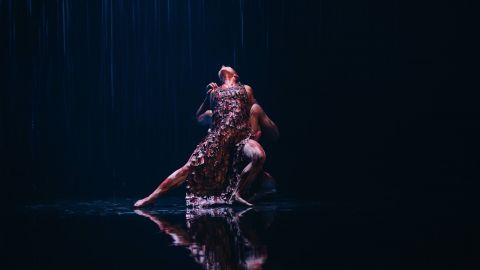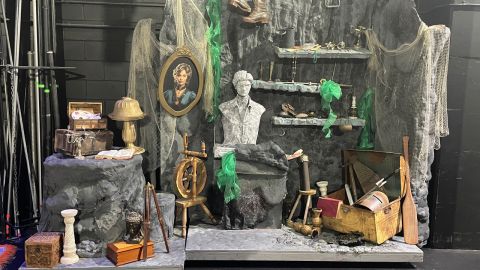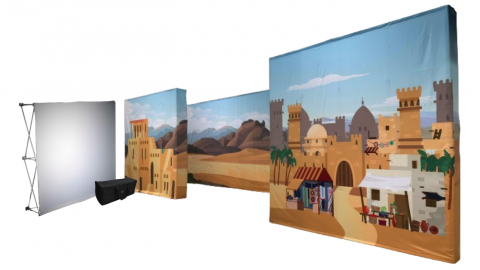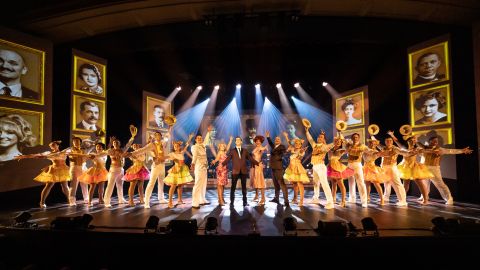Extreme Designs
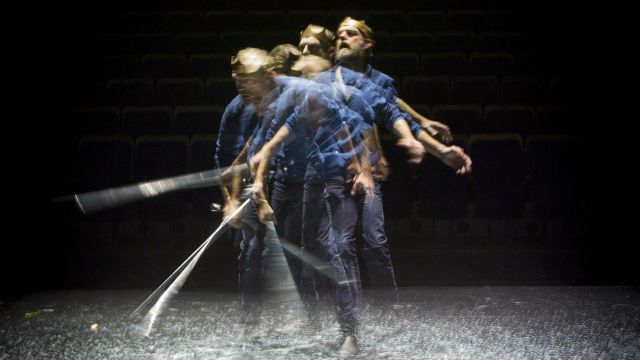
In the east and west, theatre companies have staged productions with incredible challenges. The Sydney Theatre Company staged Macbeth with the audience on the stage facing the auditorium, whilst The Black Swan Theatre premiered Dust – whipping up storm during a 32 scene play. David Spicer investigated the extreme theatrical challenges.
Nick Schleiper was Lighting Designer for the Sydney Theatre Company’s production of Macbeth, which placed the action in the auditorium of the Sydney Theatre and the audience on the stage.
“When I was asked if I would need an extra budget for a huge lighting rig in the audience I said that would defeat the purpose of it, as it should feel like a perfectly normal view, just getting a perspective you are not used to,” Nick Schleiper said.
“What people don’t know is that tucked away out of view is where 60% of the lighting rig hangs.
“All the lights that are above or behind the cast become above or in front.
 “If you sat there and looked at a theatre we have created in the auditorium, then that would be completely counter to the idea.
“If you sat there and looked at a theatre we have created in the auditorium, then that would be completely counter to the idea.
“I bent over backwards to make sure the auditorium was clean and devoid as it normally is, but there were a few tricks in there. I had to find hitherto unknown holes in the auditorium to install a combination of dimmable fluorescents and absolutely bog standard Fresnel lamps but small ones you could hide.
“People arrived with an expectation that the whole show will consist of actors clambering over seats. We were extremely judicious about not over using it and there was a perfectly logical connecting thread to when we did use it.”
One extraordinary feature was the smoke which blanketed the entire theatre to resemble a thick Scottish fog.
“It was more smoke than I have ever put on stage,” Schleiper agreed. “In straight theatre 99.9 % of the time you are trying to sneak smoke on as quietly and discretely as possible. By the time the audience sees it they are seeing the end result, not the process of the smoke machine. In this case we very much wanted to declare it and also not just be atmospheric. We set out to obscure the stage for about 12 minutes.

Some lighting highlights centred around Hugo Weaving as Macbeth.
“The audience watched Hugo Weaving’s back, with him standing stage centre, looking at that vast empty space of the auditorium,” Schleiper said. “I used a ton of backlight at the far back of the theatre. It made it look as empty and vast as possible.
“In the series of battle scenes he was swishing his sword. It was to show he was completely exhausted, allowing MacDuff to defeat him. I used strobe lighting as a way of collapsing time. It was very simply done by three slow moving lights creating an ever sickening and concentrated strobe pulse.
Will this start a trend of turning theatres back to front?
“I wouldn’t recommend not doing it. Only do if there is a damn good reason.”
Photographs from the STC production of Macbeth by Brett Boardman.
Emily McLean, who directed the World Premiere of Dust for the Black Swan Theatre Company in Perth, explained some of the production’s illusions.
The play was set on one day when Perth was completely enveloped in a dust storm. It had 32 scenes in a 90 minute show.
They ranged from being outdoors during the storm to being in a taxi, another character goes into the water and in one scene a woman is enveloped in a plague of locusts.
We could not afford traditional scene changes. They all had to happen in the same space.

We started with a whole lot of fabric on the floor, that had pick ups into the rig. As the play started they rose into the roof of the stage.
They became a representation of the dust storm hovering above the set all the time. It was powerful…they were billowing.
For what was basically some rope and fabric, it was incredibly beautiful. It was lit differently. It moved down or up depending on how oppressive the storm was. When it rained it came down and fell.
We used no actual dust. If we used real dust it just would have landed on the floor in five minutes.
We used a lot of haze. Two hand held hazers were manipulated by the actors. It became almost like a ballet with different light capturing it.
For locusts, we had them projected onto large screens. They flew to the back and front of the stage. We thought about using puppets but realised in the vastness of the Heath Ledger stage space it wasn’t working.
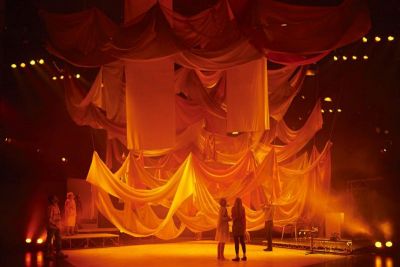 For the car scenes we flew down a couple of benches, a steering wheel attached to a music stand and we projected the white line of the road onto the screen. It was very tightly lit.
For the car scenes we flew down a couple of benches, a steering wheel attached to a music stand and we projected the white line of the road onto the screen. It was very tightly lit.
We also felt there had to be a major transformation during the play. In the beginning there were two different height rostra…they were in the centre. As the play progressed they slowly parted. By the end they were on the wings and we had the wide blank space.
Overall it was exhilarating to read a script where the writer had not let the confines of budget or stage limit what she was doing. She just trusted that the people doing it would have the imagination and ability to deal with what she was writing. She was right our designer Fiona Bruce came up with an incredible design – which included having to axe through a door. A good designer will rise to these challenges.
Photos from the Black Swan Theatre production of Dust by Gary Marsh Photography.
Originally published in the September / October 2014 edition of Stage Whispers.

